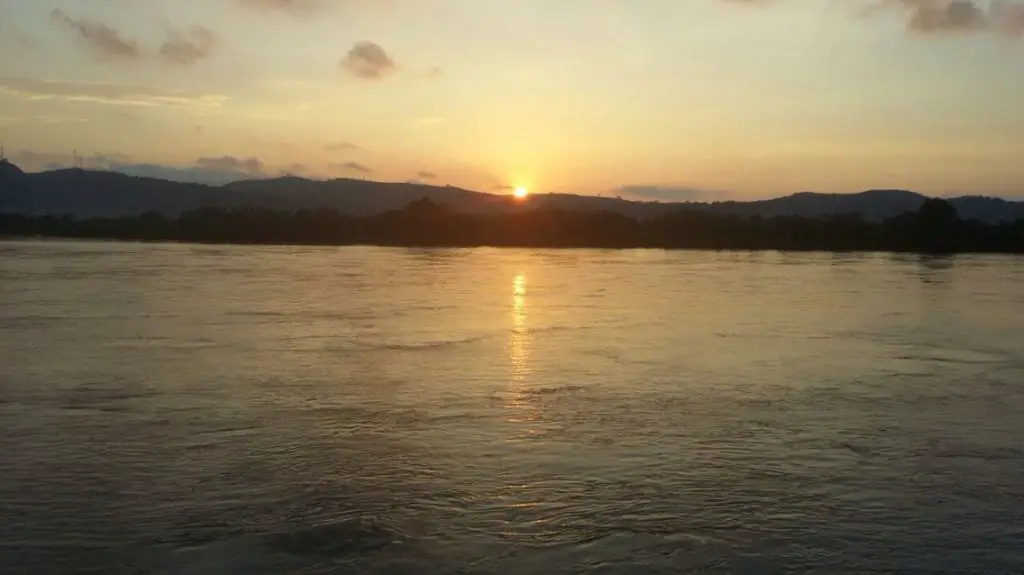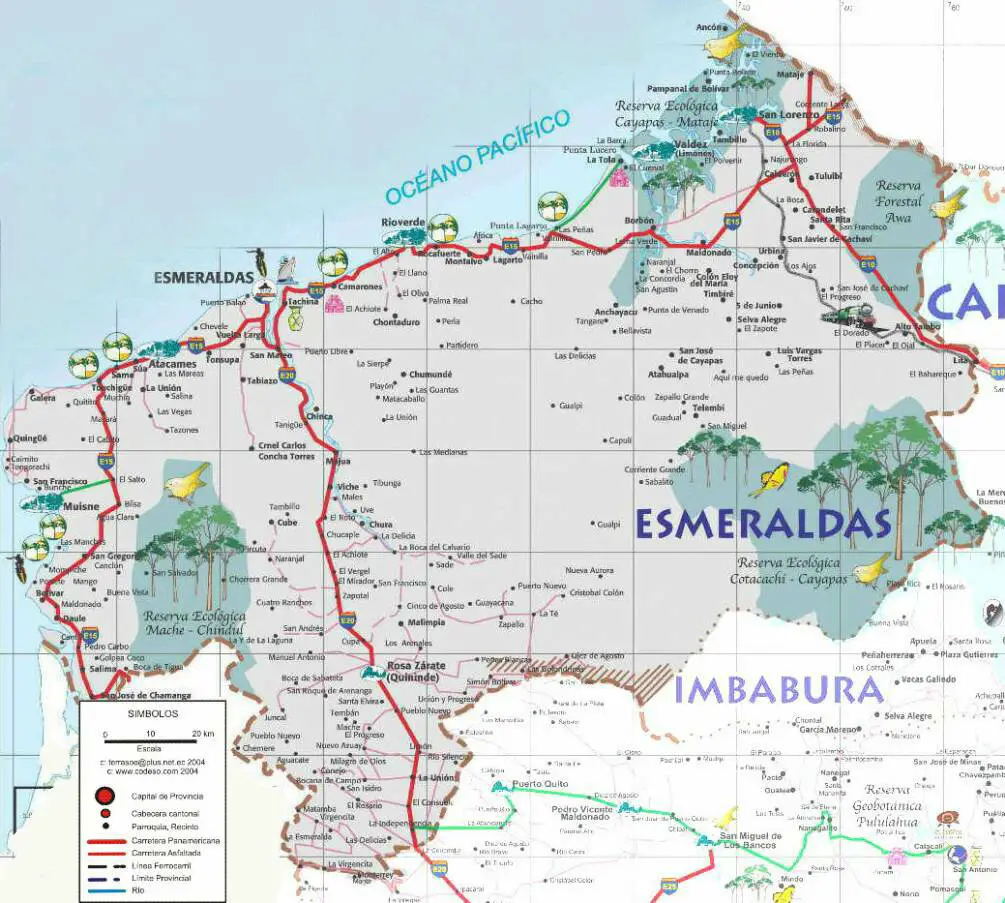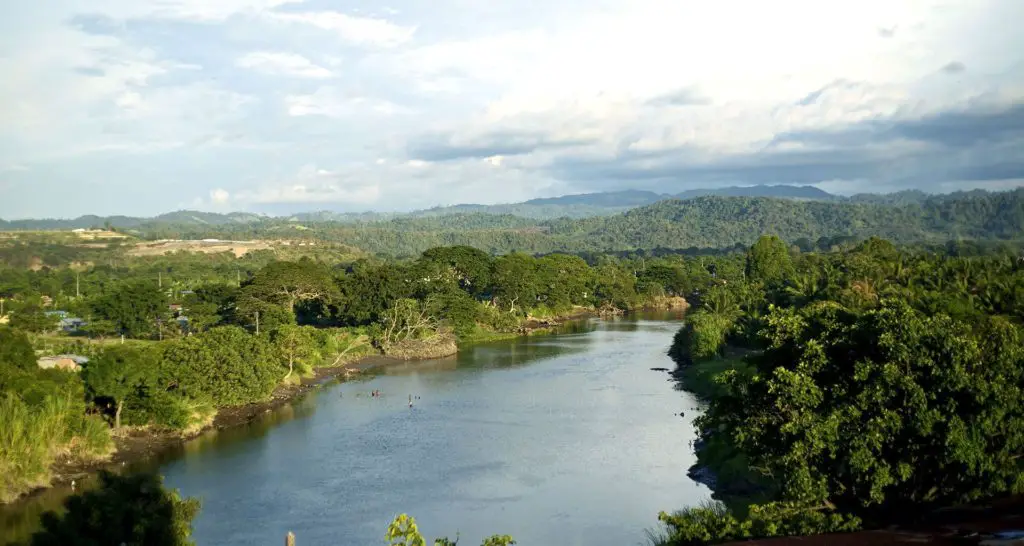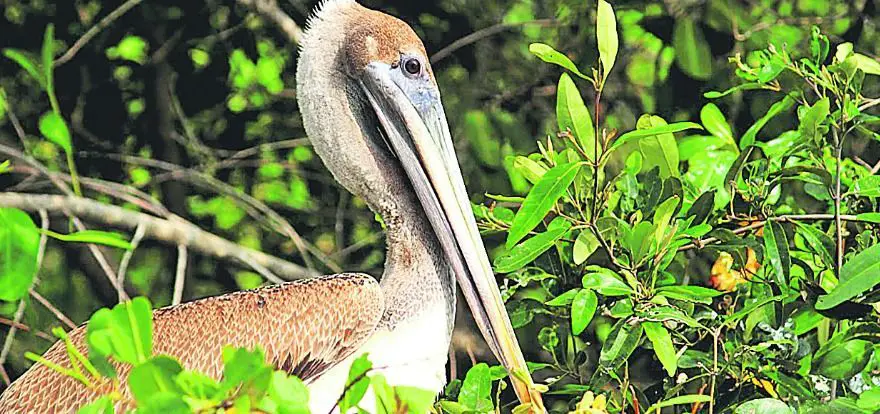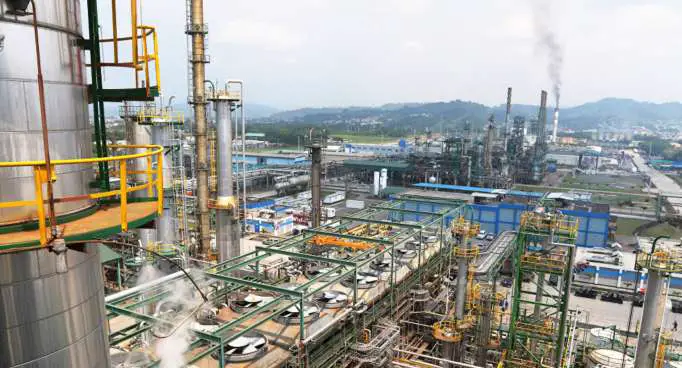The Esmeraldas River is a stream that flows from the thawing slopes of Ecuador’s Andean Cordillera to a beautiful estuary in the Pacific Ocean.
Indice De Contenido
The source of the Esmeraldas River
The source of the Esmeraldas River is the confluence of several tributaries: the Blanco, the Canadé, the Toachi, the Quinindé and the Guayllabamba,
This last, together with the Blanco, is the most important, as it is the longest and takes the waters from the north of the Inter-Andean Avenue. It rises in a narrow passage in the beautiful valley of Quito, the capital of Ecuador (see also Curaray River), which leads it to mountains of intense green and then to the wide and colourful plain, where it forms islands of pebbles.
Characteristics of the Esmeraldas River
From the beginning of its formation, which in turn comes from the melting of the Andean Cordillera, it joins the slope of the Pacific Ocean to cover a total length of around 320 kilometres.
During its course, the Esmeralda River drenches the region that gives its name to both the city and the province in a serpentine unfolding of great magnitude.
Its basin covers an area of 20,000 square kilometres, with a wide and very fast-flowing torrent, as its watershed is constantly visited by almost permanent rainfall.
From the point where it joins the Guayllabamba River, sen Quinindé (Rosa Zárate), its waters become navigable until it reaches its mouth, about three kilometres from the capital, Esmeraldas, on the magnificent Pacific Ocean.
The mouth of the Esmeraldas River
This wide river flows through some densely populated areas, leaving behind a wealth of domestic, agricultural and industrial uses.
It also forms an impressive estuary at the foot of the capital, known as the Esmeraldas River Estuary (see Guayas River), which is deep and rich in biodiversity.
This beautiful place fills the surroundings of the river with invaluable ecological contributions for the development of the life of its inhabitants.
It is located at the mouth of the river, between the towns of Esmeraldas and Tachina. It includes the mangroves that coexist at the mouth of the river itself and a surrounding area of dry scrubland.
The rich mangroves of the Esmeraldas estuary are the remnants of the extensive forests that once covered the region, later transformed by the process of urban development and the increase in agricultural areas and shrimp ponds.
Numerous species of animals live together with the mangroves and other exquisite flora. Approximately 25 different species of birds have been counted, providing an excellent focus for scientific and personal studies for those who enjoy birdwatching (see also Pacuare River).
Unfortunately, the estuary and its surroundings remain somewhat isolated for visits and exploration, as the area does not have sufficient access roads, tourism infrastructure or other suitable facilities.
Pollution of the Esmeraldas River
The Esmeraldas River, as it crosses the different towns along its course, receives various discharges of polluted water, such as sewage and effluent (see also Bogotá River), from domestic, agricultural and industrial uses, among others, as well as from the Termoesmeraldas Refinery, located in the Canton of Esmeraldas, in the province of the same name.
According to various studies, chemical compounds or phenols from industries deplete the oxygen in the water, causing the progressive death and disappearance of species in the ecosystem.
Very heavy metals settle to the bottom of the river, worsening the situation for water consumption. The permissible amount of phenols should not exceed 0.005 hundredths per litre of water. However, up to 0.1 cents per litre have been found.
The Termoesmeraldas refinery is the main polluter of the Esmeraldas River, although, paradoxically, it is an incomparable asset for the quality of life of the inhabitants of the sector.
This situation requires the attention of the competent authorities, who should carry out or reinforce awareness campaigns in the villages on the use of water and polluting waste.
The problem should also be addressed at the level of companies and small producers, and corrective measures and systems should be implemented to help clean up the Esmeraldas River in order to protect the ecosystem that lives there.

